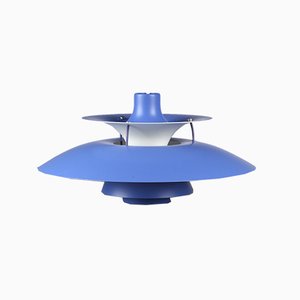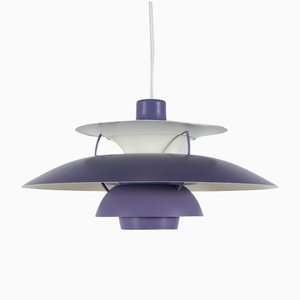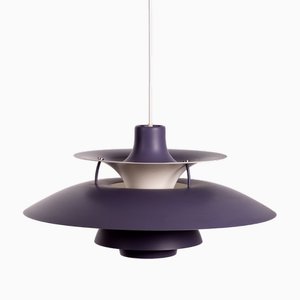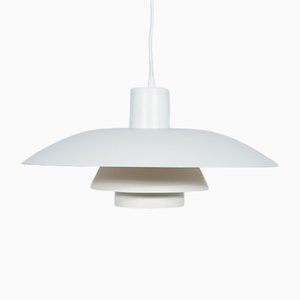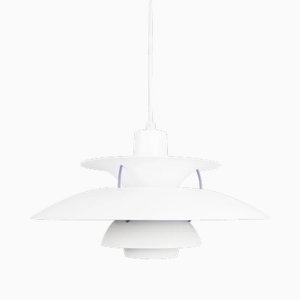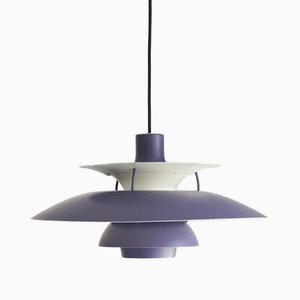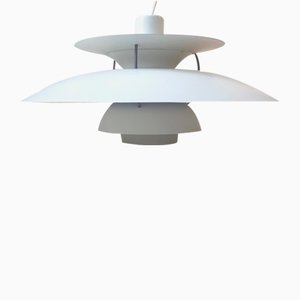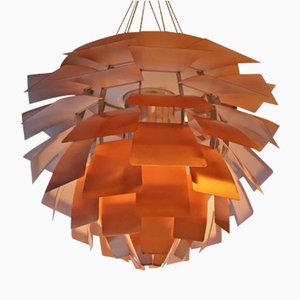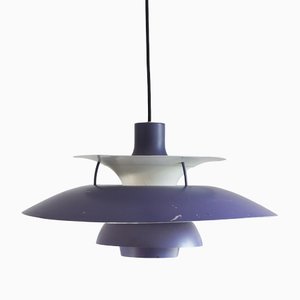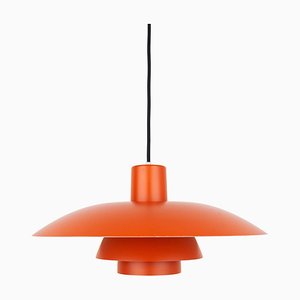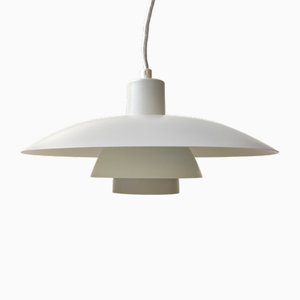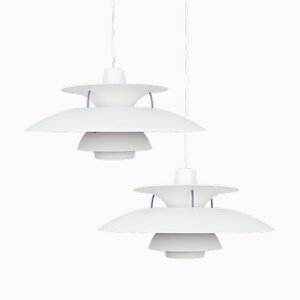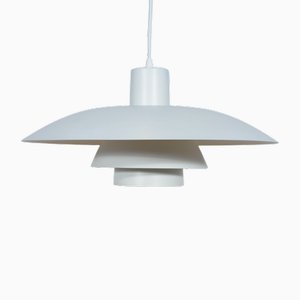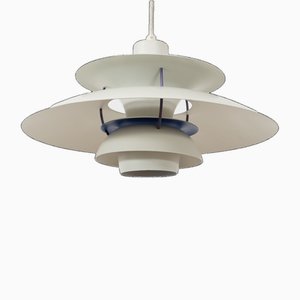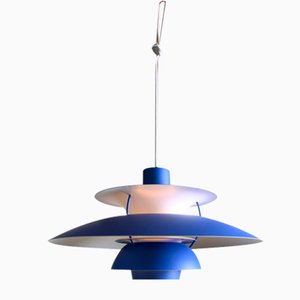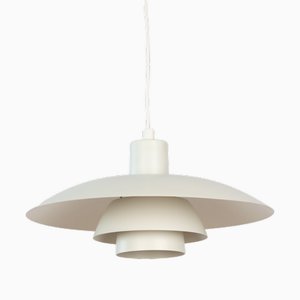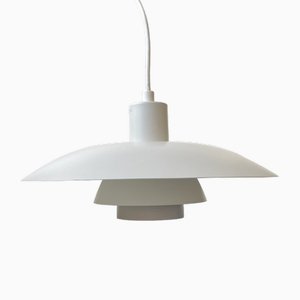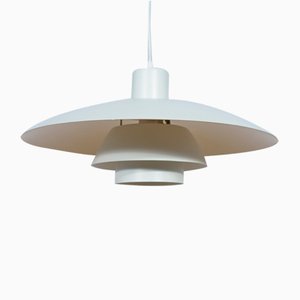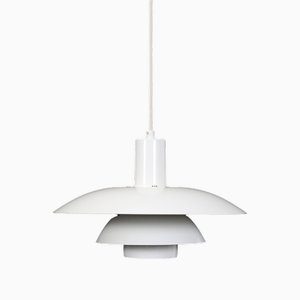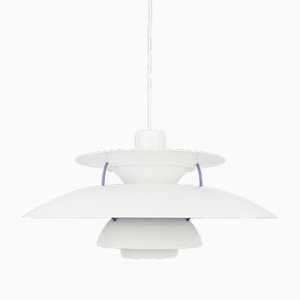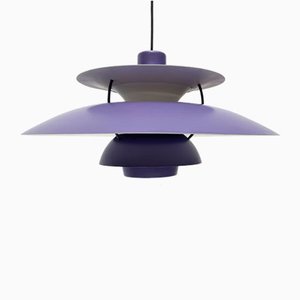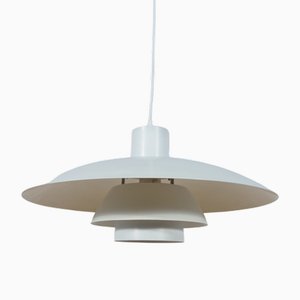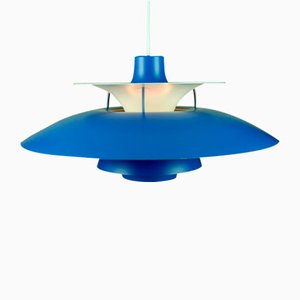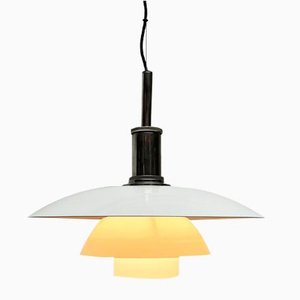Designer and architect Poul Henningsen was born in Copenhagen in 1894, the illegitimate son of satirical novelist Carl Ewald and feminist activist and writer Agnes Henningsen. He studied at the Frederiksberg Technical School from 1911 to 1914, and then at the Copenhagen Technical College until 1917. Early on in his career, he worked as both an architect and a journalist, but quickly became fascinated by lighting design, inspired by the then-new technology of the electric light bulb. He approached lighting from a scientific standpoint, investigating the impact that soft, diffused light had on one’s well being.
In 1925, Henningsen began what would become a lifelong collaboration with Copenhagen-based lighting company Louis Poulsen, for whom he produced over one hundred lamps, all belonging to the PH series, and all based on the idea of multiple shades and diffusors to provide warm, soft light. For a short time at the beginning of World War II, Henningsen was the head architect of the Tivoli Gardens in Copenhagen. However, he was forced to flee Denmark during the German occupation, and moved to Sweden.
Among his best known works are the 1958 PH Snowball, a pendant lamp with eight aluminum shades, and the 1957 PH Artichoke, a pendant lamp with a bulb surrounded by scale-like reflectors—both iconic examples of Scandinavian modernist design. Henningsen's work can be found in major museum collections around the world, including MoMA, Vitra, and the V&A. He passed away in Denmark in 1967.

